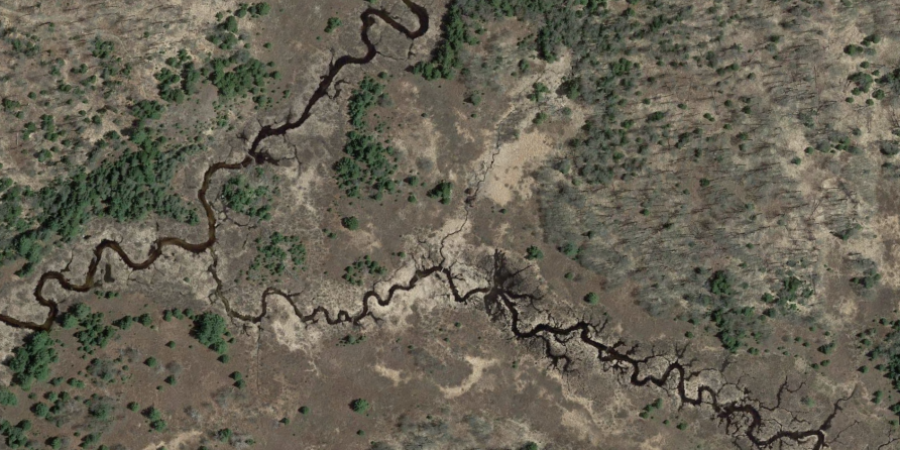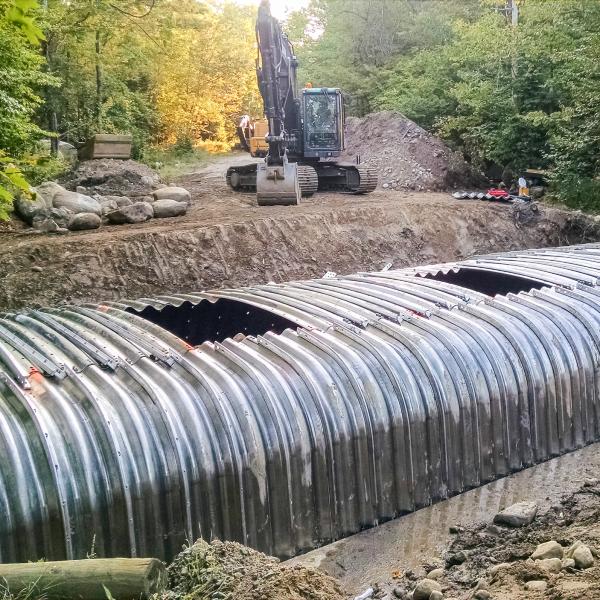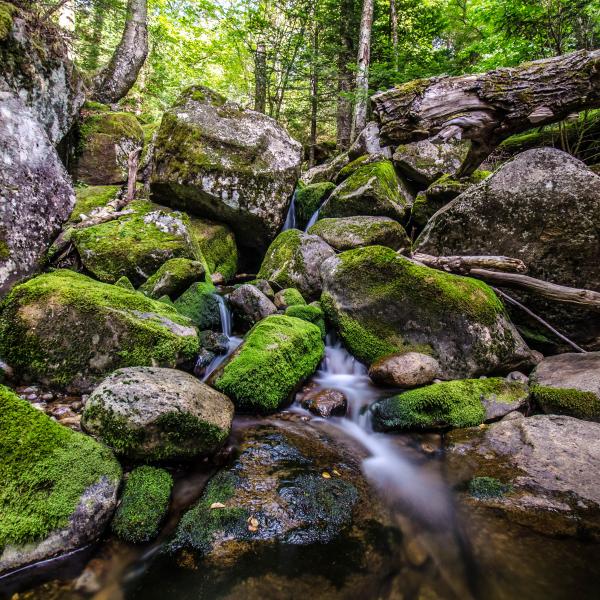When you see a stream from the air, from a plane or a satellite photo, one thing is quickly apparent: streams meander. They are sinuous, with channels that bend, curve, or loop. In steep topography, channels are straighter, influenced by slope and confined by valleys. On broad, low-slope plains, streams thread back and forth. Those bends and turns manage the energy of water, as it moves through and over channel terrain, by increasing resistance and reducing channel gradient. The geometry of the meander minimizes the amount of work, or energy expended, while using that same energy uniformly. Streams meander to maintain equilibrium – a dynamically stable form and function.
Remember, streams are transport machines, moving water and sediment from their watersheds relentlessly downslope. Meanders are produced when water in the stream channel erodes the sediments of an outer bend of a streambank and deposits this and other sediment on subsequent inner bends downstream. This process reinforces the riffle-pool structure of a stream. As every angler knows, deep pools form on the outer bends of meanders, with low sloping point bars of accumulated gravel or cobble on the inside bends. In these pool and bend sections, one side of the channel is significantly deeper. Further downstream, moving out of the bend, the channel straightens, and the channel cross-section becomes more uniform through the riffle.
Support our Natural Stream Restoration efforts to recreate stable channels based on the hydrology and hydraulics that shape natural channels. Give with confidence today!
Erosion in a stable stream can be minimal from year to year, but as a meander moves outward and becomes more looped, flows intensify on the outer bends. Eventually, the meander may be cut off from the main channel, forming an oxbow lake. Oxbows along the West Branch Ausable River near Lake Placid, along River Road, are easily visible on Google satellite views; they indicate the river's former path prior to the Ausable's logging era.
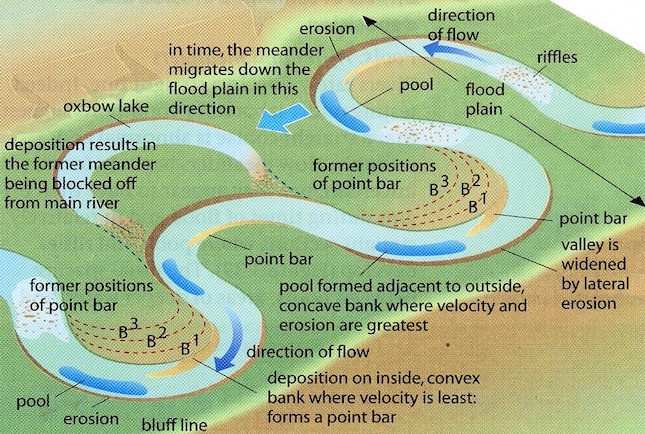
The meander pattern is ubiquitous; it’s difficult to find examples of straight streams of great length and, even then, the deepest part of the channel – the thalweg – will meander within the straight channel. Meander patterns follow a remarkably predictable geometry described by wavelength, radius of curvature, and channel bankfull width – the height on the bank where, at higher flows, water begins to tip onto the floodplain (see figure below). No matter the size of the stream, the wavelength is approximately 11 times the channel width and, invariably, between 10 and 14 times the width. The radius of curvature of the central portion of the channel’s bend averages about 1/5 of the wavelength. Channels throughout the world follow this meander geometry so closely that the form of a large river resembles that of small streams. Without scale, it can be difficult to discern which is which in aerial images.
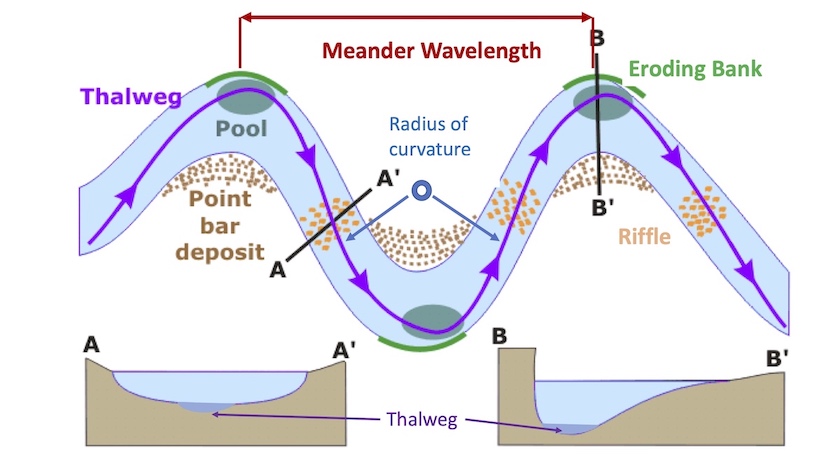
The wave pattern of a meander shows up in winter as streams ice over. Often the thalweg is the last section to freeze, leaving a sinuous thread of coursing water visible. The Atlantic Gulf Stream also meanders, as shown in the Wikipedia image below. Luna Leopold, a pioneer in the refinement of stream geomorphology and hydrology, notes that the Gulf Stream phenomenon shows that meanders are purely hydrodynamic and not dependent on fixed boundaries or sediment loads.

Meanders reflect the laws of physics. Streams provide a classic case of an open system – allowing mass and energy to flow through and refine its boundaries. For streams managing the flow of water downslope, the opposing needs of minimizing work and uniform distribution of work, or energy, result in compromise. The form that compromise takes is meandering to achieve a dynamic but relatively stable form.
---
Understanding that streams meander is essential to living with free-flowing streams. Water is essential to every form of life, and healthy streams provide us with many resources. Caring for them helps ensure that freshwater stays healthy for us and for our environment. Ensuring a stream has room to roam reduces the conflicts that occur when, for example, roads hem in an outer bend or a home is built inside a former oxbow. Wherever possible, minimizing disturbances to a stream’s need to meander – keeping new development off floodplains and away from streams, minimizing the armoring of banks – reduces damage to human infrastructure, protects stream health, and preserves water quality.
Sign-up for our e-newsletter to get weekly updates on the latest stories from the Ausable River Association.
Top image: Courtesy of Geography is Easy
Middle image: adapted from K.A. Lemke
